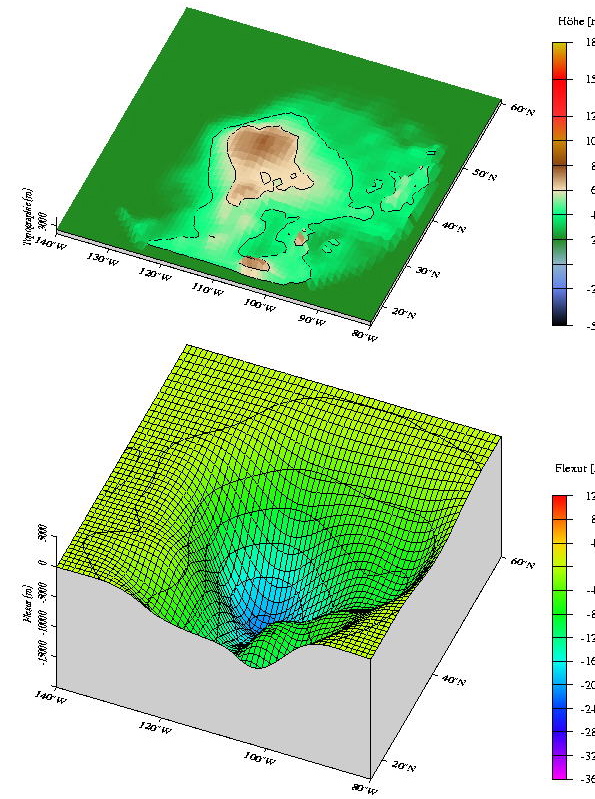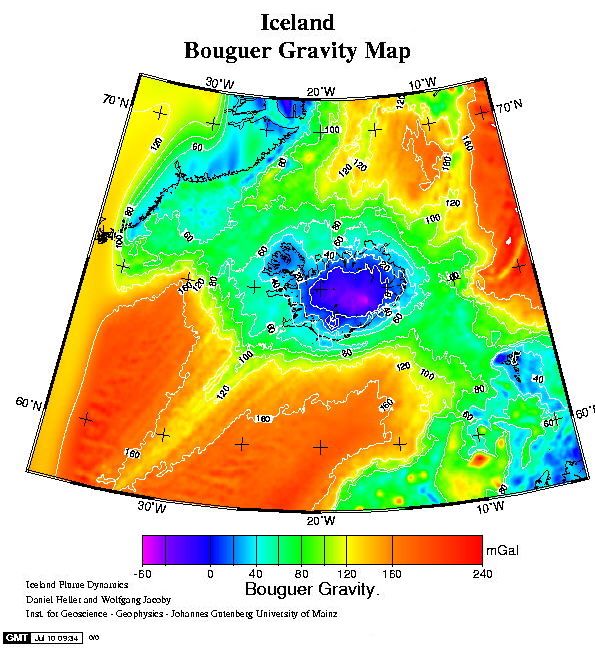 |
|||||||||
| The elastic-plastic-viscous lithosphere | |||||||||
| Plate flexure and lithospheric rheology loading of an elastic plate | |||||||||
| The plate tectonic theory assumes that plates are moving rigidly floatting on the underlying mantle. In reality, on geological time scales, plates react elastically upon vertical loading whereas mantle behaves as a viscous fluid to accommodate the flexure of the plate.
Causes for flexure of oceanic lithosphere: Causes for flexure of continental lithosphere: The pictures on the right illustrate the flexure of the lithosphere under Iceland. The Bouguer anomaly map shows a strong negative anomaly which is due to a deficit of mass which relates to the flexure of the oceanic lithosphere. |
 |
||||||||
 |
|||||||||
| Bouguer anomalie: Difference between what gravity is at a particular location, and what it ought to be at that same location from the reference ellipsoid (near sea level) based on latitudinal positions). | |||||||||